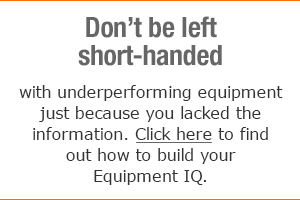Strong Economy Boosts Medium-Duty Sector
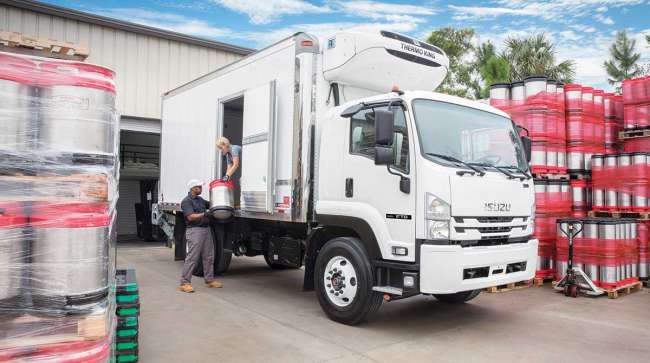
Despite some potential clouds on the horizon from higher tariffs, optimism about the overall economy founded on strong numbers in housing, construction and growth in e-commerce are boosting sales of medium-duty trucks and pushing the sector out of decadelong doldrums.
Through the first five months of this year, the latest data available as of press time, retail sales of Classes 5-7 trucks in the United States were running about 7% ahead of the same period in 2017, according to WardsAuto.com.
While high single-digit growth numbers may not sound like much, after slogging through a decade of fits and starts since the 2007-2009 recession, the sales figures give medium-duty manufacturers and suppliers optimism for the future.
Meanwhile, ACT Research Co. estimates that North American sales for those three weight classes will close out the year at about 259,000 units, up from 248,000 units in 2017, said Steve Tam, vice president at the market analysis firm. For perspective, the last high-water mark for those weight classes was 2006, when truck makers reported retail sales of 262,000 units.
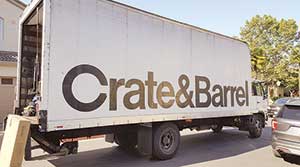
Retailer Crate and Barrel makes a delivery in San Ramon, Calif. (Getty Images)
“So, we are getting close to being back at pre-recession levels, but not quite there yet,” Tam said.
The economy, in general, has somewhat “lifted the tide for all boats,” but in medium-duty, the continued growth of e-commerce is shifting more emphasis to the supply chain, specifically on the final-mile distributors, said Joe Gallick, senior vice president of national account sales for NationaLease. “Medium-duty trucks fulfill that mode better than Class 8.”
NationaLease operates about 32,000 light and medium-duty vehicles throughout its network of 150 member-leasing companies, Gallick said.
The economy “is certainly the main driver,” said John Blodgett, vice president of sales and marketing with MacKay & Co., another market research firm. There is good business and consumer confidence to spend money, “and that drives demand,” he said.
Construction employment increased by 13,000 jobs in June and by 282,000 jobs over the past year, reaching a 10-year high, according to an analysis of government data by the Associated General Contractors of America. Association officials said many construction firms appear to be more willing to hire amid lower tax rates and a more favorable business environment.
Kary Schaefer, general manager of Freightliner and Detroit product marketing and strategy, said that housing and the general economy, which are typical drivers for medium-duty sales, are enabling what she called “modest” growth.
“Additional growth drivers are coming from last-mile deliveries and strong leasing business, which should remain positive as long as consumer and business confidence stays strong,” Schaefer added. Freightliner and Detroit are brands of Daimler Trucks North America.
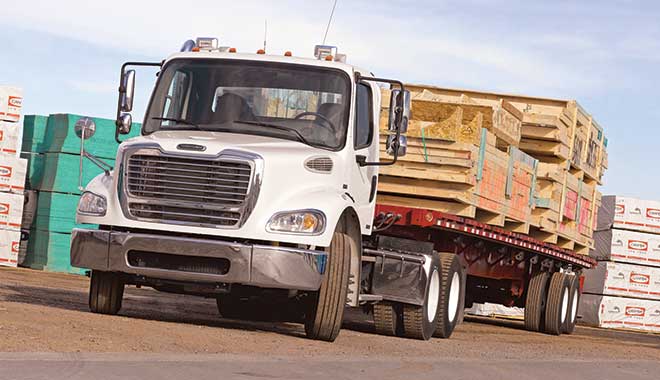
Strong numbers in housing and construction are helping drive medium-duty sales. (Daimler Trucks North America)
One issue, however, that might dampen the generally rosy outlook for the medium-duty market would be higher tariffs on steel and aluminum and the trade wars that may ensue.
Meanwhile, the new darling of the economic drivers is online sales. E-commerce is playing a larger role in the economy, industry executives said. The expectations are that it will continue to grow.
In May, the U.S. Department of Commerce estimated that retail e-commerce sales for the first quarter were $123.7 billion, an increase of 3.9% from the fourth quarter of 2017 and 16.4% from the first quarter of 2017.
Projections of e-commerce’s effect on the medium-duty sector vary depending on the source, but they all point to the fact that it now plays a major part in the nation’s economic growth and that medium-duty weight classes are playing a role, especially in those last-mile deliveries.
“It is difficult to break out those numbers but that’s a big part of our business,” said Brian Tabel, executive director of marketing with Isuzu Commercial Truck of America.
As more companies become that last-mile distributor, “it will become more popular,” Tabel said. “They need medium-duty trucks to do that.”
ACT’s Tam agreed that final-mile delivery will only accelerate. The question is, how quickly?
Tam said that because it appears younger people are doing much of the e-commerce business, the change will be gradual. “It’s evolutionary, not revolutionary,” he said. “Nevertheless, if we see a dramatic shift in the last-mile [distribution], it carries the potential to change the composition of the equipment picture,” Tam said.
The increase in e-commerce is not the only factor helping sales of medium-duty trucks. Some of it is the equipment itself, executives said.
The almost universal use of automatic and automated transmissions make today’s medium-duty trucks much easier to drive. Class 6 and lighter trucks don’t require drivers with CDLs. These qualities broaden the pool for available drivers, NationaLease’s Gallick noted.
Further, medium-duty trucks will continue to evolve safety features, said Kurt Swihart, marketing director with Kenworth Trucks, noting this will add to their appeal.
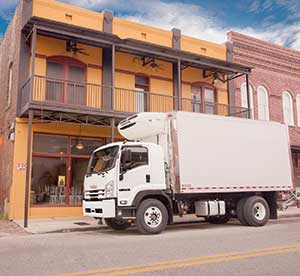
(Isuzu Commercial Truck of America)
“Demand for disc brakes, roll stability, collision avoidance systems, lane departure and other safety-related technologies has grown,” Swihart said. “In the next few years, we expect to see growth of collision avoidance systems through enhanced radar and camera technologies.”
As for the tariff situation, “I think we are just starting to see [the effects],” said MacKay’s Blodgett, noting not all countries are impacted. “We don’t have all those road maps at individual industry levels,” he added. “In total, when you impact a portion of the market, even those who do not currently source from China (or other targeted countries) will see prices increase, if not now then on future purchases,” he said.
Isuzu’s Tabel said the only effect the truck manufacturer has seen so far is from body companies. “A lot of body companies have [raised] prices, and that’s where we’ve seen it.”
Ultimately, “we don’t know how that’s going to impact industry,” Tabel said. “Will it be component based? Vehicle based?”
ACT’s Tam said the angst related to tariffs “is probably worse than reality.” It may raise vehicle prices, he noted, but for a medium-duty truck that’s already costing $60,000 or $70,000, the hit may be a nonissue.
“We are not seeing any buying trend that is a reaction or avoidance,” Tam said. “No one is buying to avoid potential tariffs.”
Transport Topics Staff Reporter Roger Gilroy contributed to this story.


